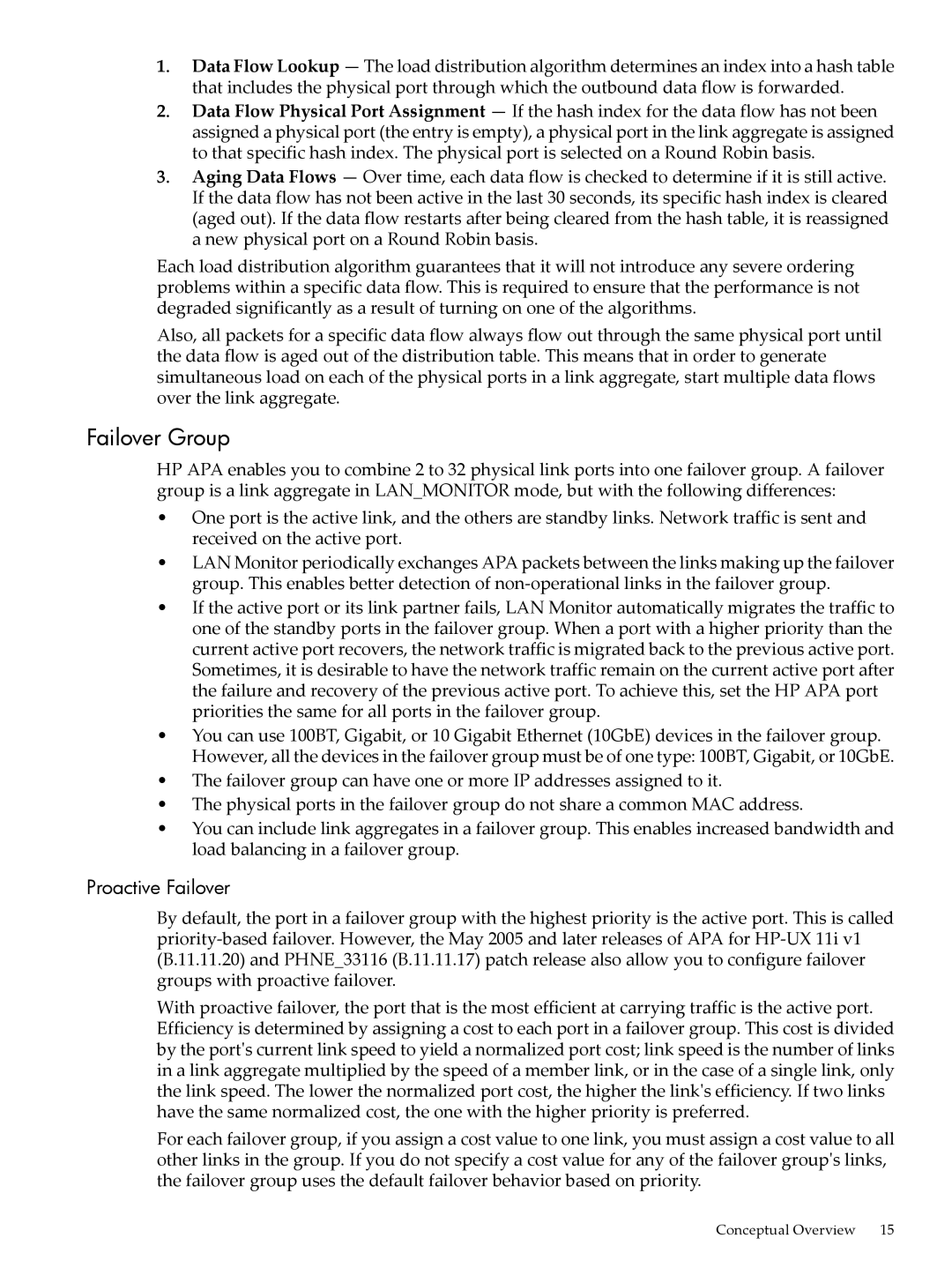1.Data Flow Lookup — The load distribution algorithm determines an index into a hash table that includes the physical port through which the outbound data flow is forwarded.
2.Data Flow Physical Port Assignment — If the hash index for the data flow has not been assigned a physical port (the entry is empty), a physical port in the link aggregate is assigned to that specific hash index. The physical port is selected on a Round Robin basis.
3.Aging Data Flows — Over time, each data flow is checked to determine if it is still active. If the data flow has not been active in the last 30 seconds, its specific hash index is cleared (aged out). If the data flow restarts after being cleared from the hash table, it is reassigned a new physical port on a Round Robin basis.
Each load distribution algorithm guarantees that it will not introduce any severe ordering problems within a specific data flow. This is required to ensure that the performance is not degraded significantly as a result of turning on one of the algorithms.
Also, all packets for a specific data flow always flow out through the same physical port until the data flow is aged out of the distribution table. This means that in order to generate simultaneous load on each of the physical ports in a link aggregate, start multiple data flows over the link aggregate.
Failover Group
HP APA enables you to combine 2 to 32 physical link ports into one failover group. A failover group is a link aggregate in LAN_MONITOR mode, but with the following differences:
•One port is the active link, and the others are standby links. Network traffic is sent and received on the active port.
•LAN Monitor periodically exchanges APA packets between the links making up the failover group. This enables better detection of
•If the active port or its link partner fails, LAN Monitor automatically migrates the traffic to one of the standby ports in the failover group. When a port with a higher priority than the current active port recovers, the network traffic is migrated back to the previous active port. Sometimes, it is desirable to have the network traffic remain on the current active port after the failure and recovery of the previous active port. To achieve this, set the HP APA port priorities the same for all ports in the failover group.
•You can use 100BT, Gigabit, or 10 Gigabit Ethernet (10GbE) devices in the failover group. However, all the devices in the failover group must be of one type: 100BT, Gigabit, or 10GbE.
•The failover group can have one or more IP addresses assigned to it.
•The physical ports in the failover group do not share a common MAC address.
•You can include link aggregates in a failover group. This enables increased bandwidth and load balancing in a failover group.
Proactive Failover
By default, the port in a failover group with the highest priority is the active port. This is called
With proactive failover, the port that is the most efficient at carrying traffic is the active port. Efficiency is determined by assigning a cost to each port in a failover group. This cost is divided by the port's current link speed to yield a normalized port cost; link speed is the number of links in a link aggregate multiplied by the speed of a member link, or in the case of a single link, only the link speed. The lower the normalized port cost, the higher the link's efficiency. If two links have the same normalized cost, the one with the higher priority is preferred.
For each failover group, if you assign a cost value to one link, you must assign a cost value to all other links in the group. If you do not specify a cost value for any of the failover group's links, the failover group uses the default failover behavior based on priority.
Conceptual Overview | 15 |
